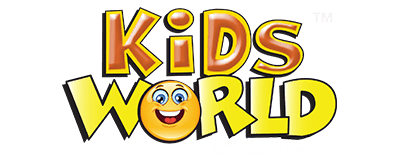Exploring Sound Energy: Science Activities for Curious Kids
There is noise everywhere! We hear a lot of different sounds all the time, like birds singing in the morning and the radio playing your favorite song. But have you ever thought about what sound is? We can learn about sound energy and how it works through fun and educational sound experiments for kids.
1. What is Sound Energy?
Things that move make sound energy. These vibrations move in waves through things like air, water, and solid objects before they reach our ears so we can hear them.
Key Concepts:
- Vibrations: Moving back and forth over and over again.
- Medium: The thing that sound moves through, like air.
- Sound waves: the way sound travels from one place to another.
![Infographic: Sound Energy at a Glance
[Image: Diagram showing a tuning fork vibrating in air, creating sound waves that reach a human ear. Include labels for "vibrations," "sound waves," and "ear".]](https://www.kidsworldfun.com/blog/wp-content/uploads/2025/07/sound-energy-at-a-glance.webp)
2. How Sound Travels
Sound can’t just go through empty space; it needs something to go through. When something vibrates, it makes the particles in the medium around it hit each other. This moves the sound energy along.
Sound Travel Chart:
| Medium | Speed of Sound (approx.) |
| Air | 343 m/s |
| Water | 1,480 m/s |
| Steel | 5,960 m/s |
Do you know that sound travels through solid objects much faster than it does through air?
![Visual Representation:
[Diagram: Three panels showing sound waves traveling through air, water, and metal with arrows indicating wave speed and density of particles.]](https://www.kidsworldfun.com/blog/wp-content/uploads/2025/07/sound-visual-representation.webp)
3. Vibrations and Pitch
The pitch of a sound tells you how high or low it is. The pitch is based on how often the vibrations happen:
- High frequency = High pitch (e.g., a whistle)
- Low frequency = Low pitch (e.g., a drum)
Pitch and Vibration Table:
| Instrument | Vibration Speed | Pitch |
| Flute | Fast | High |
| Violin | Medium | Medium |
| Bass Drum | Slow | Low |
4. Fun Sound Experiments
Let’s look at some fun and educational sound experiments for kids that they can do with their hands.
a) Rubber Band Guitar
A small box, some rubber bands, and a ruler are all you need.
- Hold the box together with rubber bands.
- Pull on the bands and pay attention to the sounds they make.
- Use rubber bands that are different sizes.
What You Learn: Higher pitches come from bands that are tighter or thinner.
b) Water Xylophone
You will need some water, glasses, and a spoon.
- Fill each glass with a different amount of water.
- Lightly tap each glass and pay attention to the sound.
What You Learn: The pitch goes up when there is less water and down when there is more.
c) Balloon Speaker
You need a balloon, a smartphone, and a rubber band.
- Cut the balloon and put it on top of a cup.
- Put a smartphone that is playing music on top of it.
What You Learn: Sound makes you feel and see things move.
![Infographic: How to Create a Water Xylophone
[Image: Step-by-step illustration of filling glasses, tapping with a spoon, and observing pitch changes.]](https://www.kidsworldfun.com/blog/wp-content/uploads/2025/07/how-to-create-a-water-xylophone.webp)
5. Real-World Examples
There is sound energy all around us. People really do use sound this way:
How to Use It Every Day:
- Sirens and alarms: Make loud, high-pitched sounds to get people’s attention.
- Musical instruments: They make music by vibrating in a certain way.
- Echolocation lets bats and other animals “see” in the dark.
- Ultrasound machines: Doctors use sound waves that are very high in frequency to look inside the body.
![Diagram: Sound Energy in the Real World
[Image: A collage showing an ambulance, a violin, a bat, and an ultrasound machine, with labels for each sound use case.]](https://www.kidsworldfun.com/blog/wp-content/uploads/2025/07/sound-energy-in-the-real-world.webp)
6. Interactive Worksheets
You can get some of these worksheet ideas by either downloading them or making them.
Worksheet 1: Match the Sound Source
- Find pictures of sound sources, like a bell, guitar, or train, and match them with the descriptions of the sounds they make.
Worksheet 2: Name the Sound Wave
- A picture of a wave where kids write down its crest, trough, amplitude, and frequency.
Worksheet 3: Sorting by Pitch
- Make a list of things or instruments and have the kids put them in order based on their pitch.
Downloadable Resource: Printable sound energy worksheets
7. Summary and Quiz
Quick Summary:
- Sound energy comes from vibrations.
- Sound moves through solids faster than through air.
- The pitch of a sound changes depending on how often it vibrates.
- Simple sound experiments can help kids learn difficult things.
Mini Quiz:
1. What does sound need to move?
a) Light
b) Medium ✅
c) Magnet
2. What is sound energy?
a) Gravity
b) Electricity
c) Vibrations ✅
3. Which one makes a louder sound?
a) Drum
b) Flute ✅
c) Piano
8. FAQ
Q: Can sound go through space?
A: No, sound can’t go through space because there is nothing there.
Q: Why do some sounds hurt our ears?
A: Loud sounds have a high amplitude, which means they can damage the tiny hairs in our inner ears.
Q: What do animals do with sound?
A: Whales and dolphins, for example, talk to each other and find their way around by making sounds.
Q: What’s the difference between music and noise?
A: Noise is random and bothersome, but music has planned patterns and beats.
9. Extension Activities
These fun sound-based activities will keep you interested:
1. Keep a sound diary
Tell your kids to write down all the sounds they hear in a day and where they come from.
2. Visit a museum of science
Look for displays about sound waves, musical instruments, or sound zones where you can play.
3. Use string to make a phone
You can make a simple sound transmission device with string and paper cups.
How It Works: The string moves from one cup to the next.
4. Make a recording of your voice
You can use an app on your phone or a voice recorder to see how your voice looks when it is on a waveform.
Sound energy is more than just what we hear; it’s also a way to learn about waves, vibrations, and how technology works. Kids love these worksheets, activities, and examples from real life. They help them learn a lot about sound science.
Want to know more? Get your balloons, rubber bands, and glasses ready. It’s time to make some noise and find out about all the cool things sound energy can do.

